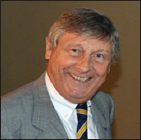Good-oral and general health
* Corresponding author: Friedrich A. Herbst, ADI Chair Public Relations, Academy of Dentistry International, 3813 Gordon Creek Drive, Hicksville, Ohio, 43526, United States. chairpublicrlations@adint.org
-
Received: ,
Accepted: ,

“JGOH:” That is one small step for a man, one giant leap for Oral Health on a global scale!
“You’re not healthy without good oral health,” former Surgeon General C. Everett Koop! Medical and dental care are largely siloed, making it difficult for these culturally, financially, and educationally different health-care professionals to work together.
The gap becomes very visible when comparing the degree of organization of the Médecins. Sans Frontières (MSF) “Doctors without borders” and oral health missionary oral health providers, dentists.
Coincidentally, MSF was founded 1971, ADI, Academy of Dentistry International 1974! Medical and dental patients share common risk factors that lead to diseases both within the mouth and the rest of the body such as tobacco and alcohol use and consumption of sugary foods. Social determinants of health, including economic status, social and welfare policies, and living and working environments, are common risk factors for poor overall and oral health.
A siloed dental profession cannot solve people’s oral health problems alone, nor can the medical profession ‘MSF’ solve general health problems alone.
To provide whole-person, integrated, patient-centered care, it is important to connect the mouth with the rest of the body. The evolution of the dental profession occurred in isolation from other providers and health-care settings. Dental care traditionally is provided in a cottage industry of small private practices.
ADI mission and commitment are to change this.
Provider and patient health literacy are critical considerations in improving dentist-to- dentist and dentist-to-patient communication, and ultimately the health of vulnerable populations. According to the United Nations Refugee statistics, 68 million people wander around the globe.[1] How about oral health care for these.
Integrating Oral Health, Primary Care, and Health Literacy are needed for programs that provide preventive oral health services to children, adolescents, and elderly.[2]
The JGOH, as the vehicle of choice, offers ample possibilities for ADI fellows to publish about expertise and exchange knowledge of performed missions with results to motivate colleagues to follow examples.
ADI unlike other fraternally honorary associations is accredited by the United Nations agencies: DPI/NGO communications platform, ECOSOC, to promote collective action for a sustainable world and the NCD non-communicable diseases.
The aim is to coordinate an Oral Health Care program to meet the challenges of oral health and primary care medicine with the challenge of developing a patient-centered primary oral care,
-
Creating “communications, outreach, local engagement, and services tailored to cultural, health literacy, and linguistic needs;”[3]
-
Addressing provider deficiencies in cultural competency by training plus the use of certified Traditional Health Workers consistent with the members’ diversity; and
-
Developing a system, including quality improvement plans that focus on eliminating disparities in access, quality of care, experience in care, and outcomes.
To summarize afore are examples to emphasize challenges, tasks, and goal, the uniquely addressed by the Journal of Global Oral health to meet a gap which, unlike by the Doctors without Borders, is not yet met by the oral health profession.
Financial support and sponsorship
Nil.
Conflicts of interest
There are no conflicts of interest.
REFERENCES
- Barriers to dental visits in Belgium: A secondary analysis of the 2004 national health interview survey. J Public Health Dent. 2013;73:32-40.
- [Google Scholar]
- Conference: IADR General Session and Exhibition 2014
- Discussion Paper 2018





